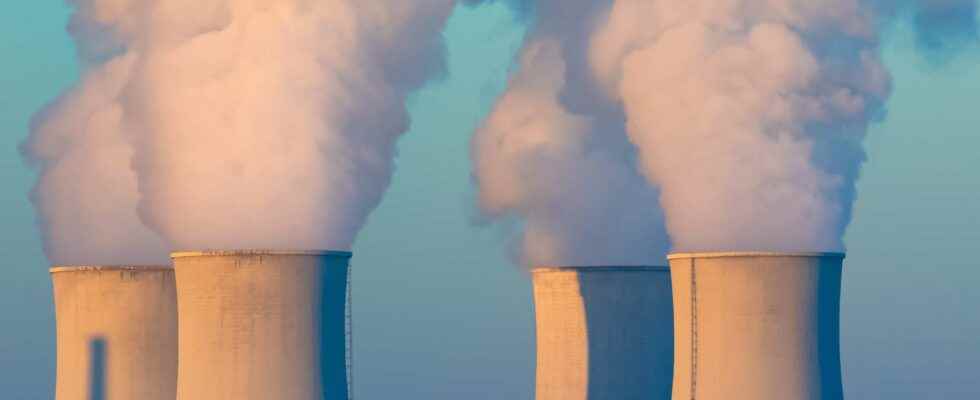You will also be interested
[EN VIDÉO] The difference between nuclear fusion and nuclear fission What is the difference between fission and nuclear fusion? Both involve reactions at the atomic nucleus, but fusion involves bringing two light nuclei together, where fission breaks a heavy nucleus into two lighter ones.
September 2021, from stress corrosion was discovered in one of the reactors of the central of Civaux. Since then, many reactors have been shut down to check whether corrosion was present in the same places. Of the 56 reactors in the French nuclear fleet, 27 are currently shut down, between ten-yearly inspections, shutdowns for reloading, and this famous corrosion under duress which caused the stoppage of 12 of them for checks. Olivier Dubois, Deputy Director of Safety Expertise at the Institute for Radiation Protection and Nuclear Safety (IRSN), agreed to answer Futura’s questions about it.
“This is an unprecedented situation, which has several factors”
When the fine weather arrives, it is the time when the shutdowns for maintenance and reloading of the nuclear fuel : after reactor shutdown and gradual cooling for a few days, the spent fuel is placed in a cooling pool on the power plant site while new fuel is placed in the vessel. In total, this process takes at least a month, and up to six months if work is planned at the same time.
” Stops for recharging are often carried out at the beginning of spring, because electricity needs are less than in full winter », explains Olivier Dubois. ” They then follow during the summer, when electricity needs are at their lowest. »
“But currently it is an unprecedented situation, and which has several factors. About half of the reactors are shut down., says Olivier Dubois. ” The main reason is the stress corrosion discovered on certain circuits, but there are also the planned ten-year inspections of the 900 MWe (megawatt electric) reactors as well as those of certain 1,300 MWe reactors. »
Extending 900 MWe reactors takes time
The purpose of these ten-yearly outages is to check each element of the reactor, in order to extend, or not, its duration ten-year life. ” EDF carries out a large battery of tests, which IRSN and ASN then verify. The checks range from the anchoring of the pipes for the behavior in the event of earthquaketo the control of the tank, which is a non-replaceable component”, explains O. Dubois.
Because it is in the tank that the reactions of nuclear fissionit is designed to withstand irradiations important, and must be particularly robust. It is also subjected to high pressure and temperature conditions, with a temperature of the water circulating around the fuel of approximately 300°C and a pressure of 155 times that of theatmosphere ! ” EDF uses an in-service inspection machine (MIS), which will check that there are either no faults in the vessel, or no changes in known faults. Some tanks are known to have defects since their manufacture: closed cracks, invisible toeye naked, but present under the coating of the tank. They correspond to an area where the grains of the metal are not glued to each other”adds O. Dubois.
As the 900 Mwe reactors reach 40 years of operation, EDF’s aim is to extend this period to 50, or even 60 years. “One of the major modifications to the 900 Mwe reactors is to incorporate a corium stabilizer (molten core), in the event ofaccident similar to that of Three Mile Island which occurred in 1979. We want to ensure that in the event of the vessel being pierced by the corium, it can spread correctly over a zone large enough to cool and not pierce the foundation slab in concrete of the reactor”, says O. Dubois. But the modifications associated with the 4e ten-yearly inspections of the 900 MWe reactors take many months: some have already benefited from the modifications, while EDF’s objective is that they “have all passed their ten-year inspection by 2027, then will come the turn of the more recent 1,300 MWe reactors. »
The Discovery of Stress Corrosion Changed the Game
If the ten-yearly inspections are planned and calibrated to optimize the operation of the nuclear fleet, corrosion has changed the situation, especially after the effects of theepidemic of Covid. But what does it correspond to? ” It was detected during the ten-year inspection of Civaux 1, thanks to checks by ultrasound which make it possible to check the presence of faults in the pipes at the level of the welds »explains O. Dubois.
Stress corrosion is the damage to a material under the effect of its chemical environment. “Where EDF found stress corrosion cracks, the pipes were in stainless steelso the experts did not expect it a prioricontinues O. Dubois. The cracks are located at the level of the safety injection circuit, which makes it possible to continue to cool the reactor in the event of a breach in the primary circuit: more precisely, at the level of its junction with the primary circuit. »
As Olivier Dubois explains, the corrosion was most likely activated precisely because of this proximity to the primary circuit. Indeed, the temperature there is around 300°C, which can activate corrosion. ” The defects are located near welds, directly at the level of the piping. They are not linked to the age of the reactor, as they are present in particular on the most recent reactors in the nuclear fleet, the N4, but probably linked to the mechanical loading exerted on the welds. » The operator EDF announced repairs to the affected reactors, but which could take from a few months to several years to be finalized at the scale of the French nuclear fleet, and depending on the list of affected reactors which will be drawn up after all the checks have been completed.
Interested in what you just read?
